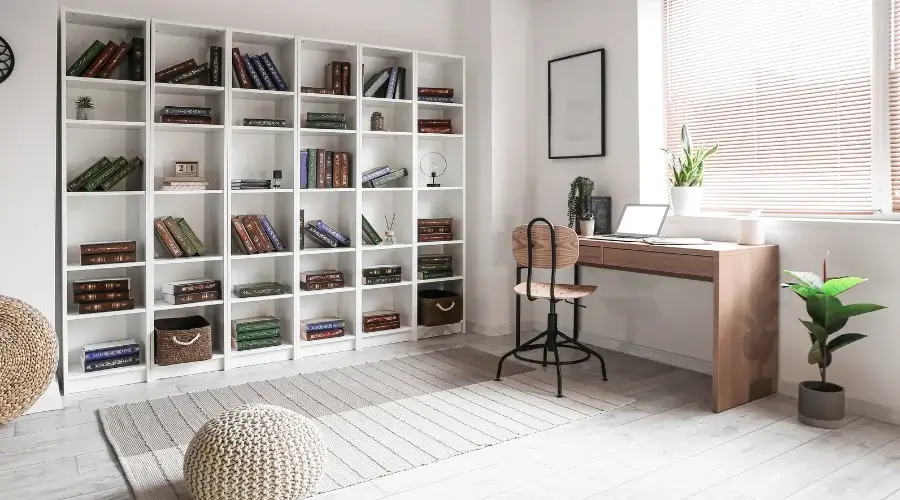The Evolution of Smart Home Technology
Smart home technology has significantly advanced from its early days of simple systems controlling lights and thermostats. Today, it encompasses sophisticated networks that enhance convenience, security, and efficiency in home management. Modern smart homes allow homeowners to control and monitor their environments using smartphones or voice commands.
Choose Dayton Stucco for expert stucco services in Dayton. With over 20 years of experience, we offer prompt and professional work on stucco, EIFS, sealants, and repairs. Reach out now for your FREE estimate and consultation!
Popular Smart Technologies for Home Environments
The range of smart devices available today is extensive and diverse, improving various aspects of home life. Some of the most popular intelligent technologies include:
1. Smart Lighting: Use a voice command oran app to change the hue and luminosity of your lights. commands. These lights can be programmed to adjust automatically based on the time of day or room occupancy.
2. Smart Thermostats: Devices like the Nest Thermostat learn your schedule and preferences to optimize comfort while conserving energy and reducing costs.
3. Smart Security Systems: Features like video doorbells, security cameras, and smart locks provide real-time monitoring and alerts for unusual activity.
4. Smart Appliances: From refrigerators that track groceries to ovens that can be preheated remotely, these appliances simplify daily tasks.
5. Voice Assistants: Devices like Amazon Echo and Google Home enable voice control of other smart devices and assist with tasks such as playing music or setting reminders.
Seamlessly Integrating Technology with Design
Smart home technology is designed to complement your home's décor. Many devices blend seamlessly with your surroundings, featuring stylish designs. Smart light switches and plugs look traditional, while smart speakers and hubs often have sleek, modern aesthetics. You can select finishes and colors that match your interior, ensuring that technology enhances rather than disrupts your home's look.
Promoting Sustainability
Smart home technology supports sustainable living. Devices like intelligent lighting and thermostats lessen energy use, save utility costs, and help the environment. Intelligent irrigation systems optimize water usage for gardens, and many smart appliances offer energy-saving modes and tips for reducing energy use.
Future Trends in Smart Home Technology
There are exciting things ahead for smart home technologies advancements:
1. AI-Powered Homes: Artificial intelligence (AI) will enhance smart homes by learning your habits and preferences. Homes will proactively adjust settings like lighting and temperature and suggest meal plans based on your routine. For example, AI could automatically lower the thermostat before bedtime to improve comfort and energy efficiency.
2. Interconnected Ecosystems: Future smart homes will feature seamless interoperability between devices from different brands. Enhanced compatibility standards will enable devices to communicate and work together smoothly, allowing unified control through a single interface—a smartphone, voice assistant, or dedicated control panel.
3. Health Monitoring: Smart home technology will increasingly focus on health and wellness. Advanced sensors will monitor air quality, humidity levels, and sleep patterns, providing actionable insights to improve your environment. Some devices will detect falls or medical emergencies and alert emergency services or designated contacts, enhancing safety for vulnerable family members.
4. Sustainable Innovations: As environmental awareness grows, eco-friendly smart devices and systems rise. Innovations will prioritize energy efficiency and conservation, incorporating features like solar power integration, real-time energy usage monitoring, and automated systems that optimize energy consumption. For example, intelligent irrigation systems adjust watering schedules based on weather forecasts, significantly reducing water waste.
Conclusion
Integrating smart home technology is transforming our lives, making homes more convenient, secure, and energy-efficient. From its simple beginnings, innovative technology has evolved into complex networks controllable via smartphones or voice commands. With future advancements in AI, interconnected ecosystems, health monitoring, and sustainable innovations, the potential of smart home technology is limitless. Embracing these advancements keeps us up-to-date and contributes to a more sustainable future for everyone.


